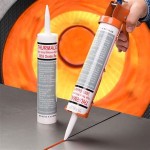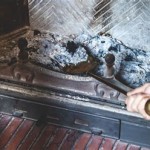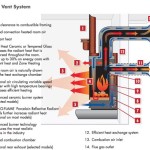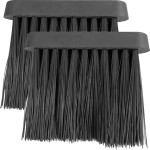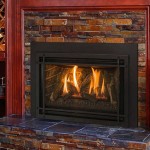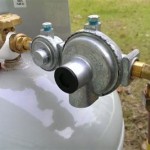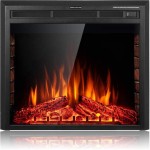What Is a Heat Circulating Fireplace?
A heat circulating fireplace is a type of fireplace designed to efficiently distribute heat throughout a room or even an entire house. Unlike traditional fireplaces, which primarily radiate heat into the immediate area, heat circulating fireplaces utilize a system of fans or vents to move warm air away from the firebox and into other parts of the space. This enhanced heat distribution makes them a more energy-efficient and effective heating source compared to traditional fireplaces.
How Heat Circulating Fireplaces Work
The core principle behind heat circulating fireplaces is simple: convection. Hot air rises, and this natural phenomenon is harnessed to move warm air from the fireplace's firebox to other areas. Here's a step-by-step breakdown:
- Fire Combustion: As wood burns in the firebox, it generates heat. This heat warms the air immediately surrounding the fire.
- Air Circulation: The heated air rises, creating a convection current. This current is further enhanced by fans or vents installed in the fireplace.
- Warm Air Distribution: The rising warm air is directed through a network of ducts or vents, distributing it to other parts of the room or house. The warm air can be blown directly into specific zones or circulated throughout the entire space, depending on the fireplace's design.
- Return Air: Cooler air from the room or house is drawn back into the fireplace, creating a continuous cycle of heat circulation.
This system efficiently transfers heat away from the firebox and distributes it throughout the desired areas, maximizing the heating potential of the fireplace.
Types of Heat Circulating Fireplaces
Heat circulating fireplaces are available in a variety of styles and designs, catering to different needs and preferences. Here are some common types:
1. Direct Vent Heat Circulating Fireplaces
These fireplaces feature a direct vent system that extends through the wall or roof. The vent draws in fresh air from outside and exhausts combustion byproducts directly outdoors, eliminating the need for a chimney. This design allows for a more efficient combustion process and greater heat output. Direct vent fireplaces are also typically more compact and easier to install, making them suitable for modern homes.
2. Vent-Free Heat Circulating Fireplaces
Vent-free fireplaces, unlike direct vent fireplaces, do not require an external vent. They exhaust combustion gases into the room, although they are designed to produce very low levels of emissions. These fireplaces are typically more affordable and require less installation effort, but it's crucial to ensure adequate ventilation in the space to prevent carbon monoxide buildup.
3. Gas Heat Circulating Fireplaces
Gas heat circulating fireplaces utilize natural gas or propane to generate heat. They are often more convenient than wood-burning fireplaces, as they require less maintenance and provide instant heat. The heat circulation system operates similarly to wood-burning fireplaces, with fans or vents distributing warm air to other areas.
4. Electric Heat Circulating Fireplaces
Electric heat circulating fireplaces use electrical heating elements to produce heat. They are often more energy-efficient than traditional electric heaters and can be installed without the need for a chimney or vent. Some models even feature realistic flame effects, creating the ambiance of a traditional fireplace.
Benefits of Heat Circulating Fireplaces
Heat circulating fireplaces offer several advantages over traditional fireplaces, making them an attractive option for homeowners seeking efficient and effective heating solutions.
1. Increased Heat Distribution
The primary benefit of heat circulating fireplaces is their ability to distribute warm air throughout a larger area. This efficient heat transfer ensures that the entire space is comfortably heated, eliminating cold spots often associated with traditional fireplaces.
2. Enhanced Energy Efficiency
By efficiently distributing heat, heat circulating fireplaces reduce energy waste. This can lead to lower heating costs and a smaller carbon footprint.
3. Increased Safety
Heat circulating fireplaces are generally safer than traditional fireplaces, as they eliminate the need for open flames and embers. This reduced risk of fire hazards makes them a more suitable option for homes with children or pets.
4. Versatility
Heat circulating fireplaces are available in a wide range of styles and designs, allowing them to seamlessly integrate into different architectural settings. They can be used as the primary heat source for a room or complement other heating systems.
In conclusion, heat circulating fireplaces offer a compelling combination of efficient heat distribution, increased energy efficiency, enhanced safety, and versatile design options. These factors make them a wise investment for homeowners seeking reliable and comfortable heating solutions.

Majestic Sovereign 36 Heat Circulating Wood Burning Fireplace

Majestic 42 Sovereign Heat Circulating Wood Burning Fireplace

Majestic Sovereign Heat Circulating Wood Burning Fireplace

Majestic Sovereign 42 Heat Circulating Wood Burning Fireplace Sa42c

Heatilator Fireplaces Canadian Home Inspection Services

Majestic Sovereign 36 Heat Circulating Traditional Wood Burning Fireplace

Heatilator Accelerator 36

Monessen Sa42c 42 In Heat Circulating Fireplace 1 Pick N Save

Majestic 36 Sovereign Radiant Heat Wood Fireplace

Majestic Sovereign Heat Circulating Wood Burning Fireplace Sa36c Sa42c
Related Posts

